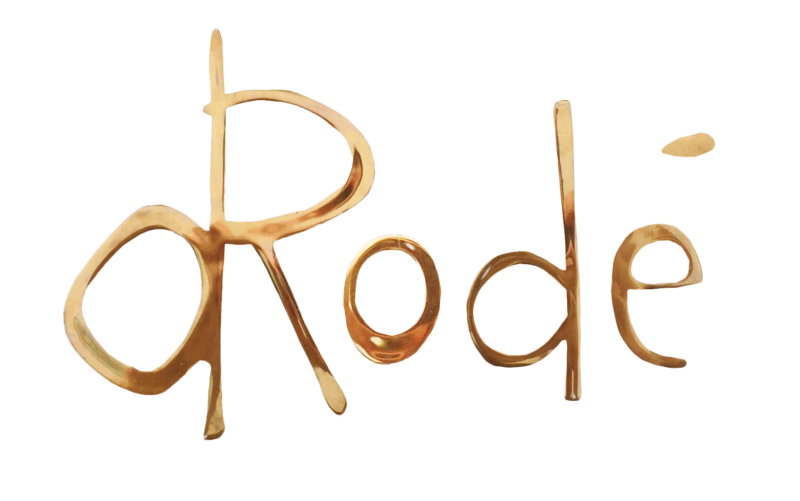This special issue of the Elesta newsletter features an interview between our art advisor Giovanna Procaccini and contemporary mosaicist Orodè Deoro. His Milanese laboratory is the main attraction on our Mosaics Grand Tour, where starting from Milan, we visit many cities, rich in essential testimonies to ancient and contemporary mosaic art.
G.P.: On the itinerary designed by Elesta Travel focusing on ancient, modern, and contemporary mosaic, were would you insert yourself in the long-lasting tradition of this art?
O.D.: I’d insert myself in the research on contemporary mosaic. During the last few decades, the mosaic environment and the main schools in the world have legitimised traditional mosaic and opened to experimentation. At the Scuola Mosaicisti del Friuli in Spilimbergo (Friuli Venezia Giulia region) they teach classic mosaic and then give the students the freedom to find the material most suitable to be a mosaicist today.
I was invited to the collective exhibit Eccentrico musivo at MAR (the Art Museum of Ravenna) in 2014, curated by Linda Knifftz, supervisor of the International Centre for the Documentation of Mosaics, and Prof. Daniele Torcellini. It was a unique experience because the artists involved made mosaics with the most unusual materials.
I would like to showcase the explosion of research around the word of mosaic. In mosaic experimentation, the idea of accumulation, of putting together similar objects seen as tiles, often results in composition interpreted as an ‘eccentric mosaic’. Accumulation is part of the new language of mosaic. There are those, like me, who work with a composition of handmade tiles as if working on a painting. Think of the form of the tile in the overall mosaic and you can see the pixels in an overall picture. The division into squares, the use of pixels, and the accumulation of unusual materials are already part of mosaic work. It’s an escape from the traditional image of mosaics, an attempt to modernise and position mosaics close to contemporary painting, sculpture, and photography. I insert myself in this phase of the mosaic renaissance.
G.P.: Always referring to the Elesta itinerary on mosaics, the Mosaics Grand Tour, how do you feel about opening your studio to experts and visitors curious about your work?
O.D.: In my training, I have dealt with many public events. La casa museo di Vincent Brunetti, the Vincent City museum in Guagnano, where I began creating mosaics in 2000, is open to the public. There, I worked and explained my work at the same time. At the beginning, it bothered me but then I practiced and now I’m comfortable working in front of people.
The language of ceramic, like writing, is in development. Sometimes I explore areas that I never return to. People who come to my studio won’t find homogeneity, because it is a laboratory, not a gallery or an exhibition.
G.P.: Talk to me about the Premio Arte 2015. You won in the sculpture section, as a mosaic section didn’t exist, with the two-dimensional and figurative artwork “The Eternity”. Don’t you think that it would have been more suitable to have received the prize for painting than for sculpture?
O.D.: Between painting and sculpture, I prefer the prize for sculpture, even if I practiced with painting, because my mosaic itself is evolving towards a loss of its support and profile dimension. I’m working on bringing out what’s inside a mosaic, the inner part. So, if there is a need to find a different name than ‘mosaic’, I prefer ‘sculpture’.
G.P.: Your work falls between Figurative and Expressionist, with a technique between art and craftsmanship, but without the feel of painting. So, how we can define your art?
O.D.: I work in the figurative field but I have a new style that’s close to mosaic. In 2014, I realised the artwork Garden of Eden on an external wall of the house-studio of architect and designer Fabio Novembre in Milan. He understands my work very well. I was born a painter and I am self-taught in everything else, but at a certain point I felt the passion for mosaic. As a painter, I love Modigliani, Schiele, the Expressionists, and Klimt. In the field of mosaic, I’m a painter, without masters, looking only at Gaudí.
G.P.: With mosaic, there is the matter affinity. But you have a different use of tile: you cut it until you almost reach the inlay work. At a pictorial level, you have a figurative interpretation of Pop Art as the key. You are self-taught and use different material. Where will your artistic research bring you?
O.D.: The word mosaic connects with me. I was looking for mosaic but I arrived at ceramic, and now I want to go ahead with my research and free mosaic from its binding. My faces have always been masks, the stop-motion of a face that you put on and show to the world, consciously or not. Today, I’m mature enough, thanks to the path I have chosen, to go beyond masks. I want to work on symbols, on my real demons. Remember Baudelaire’s work, Mon cœur mis à nu: his intimate diary with free and released thoughts, where he talked about his opinion of the world? I want to go beyond the mask, where there are symbols. Symbols require a lot of research and deep digging: for this journey, I chose the Red Book by Jung as a guide.
G.P.: Good luck!
Sede legale: Via Guglielmo Silva, 39 – 20149 Milano
Tel: +39 02 00697153
E-mail: info@elestatravel.it
Elesta Travel è un tour operator online e Destination Management Company. Riceviamo clienti, fornitori e partner su appuntamento. Ecco tutti i nostri contatti:
Elena Sisti: +39 348 0081373, e.sisti@elestatravel.it: Direzione Tecnica Agenzia, organizzazione e preventivi.
Elisabetta Gavazzi Carissimo: e.gavazzi@elestatravel.it: per itinerari e curatela artistica.
Anna Nosari: press@elestatravel.it: per ufficio stampa e comunicazione.

